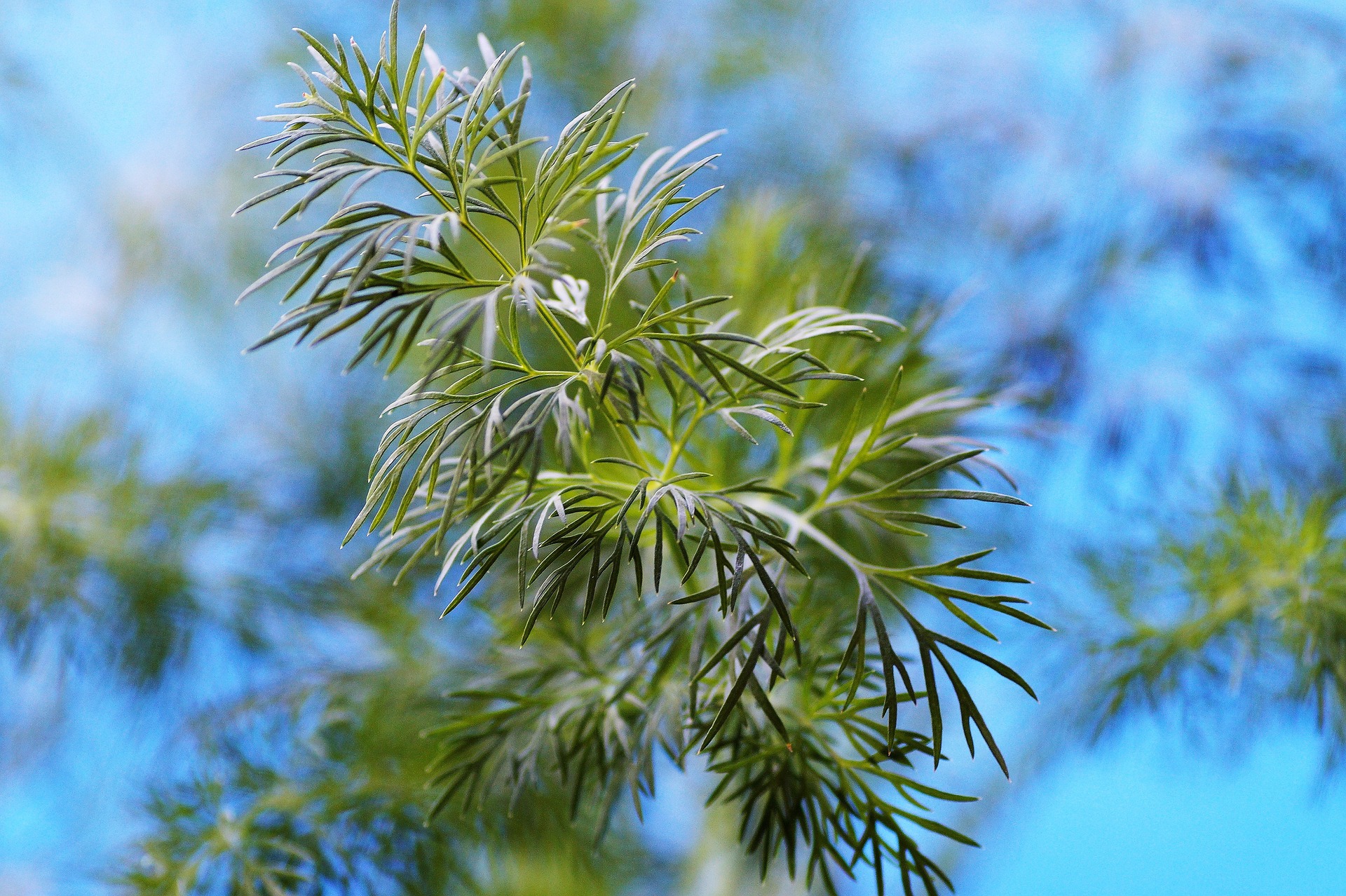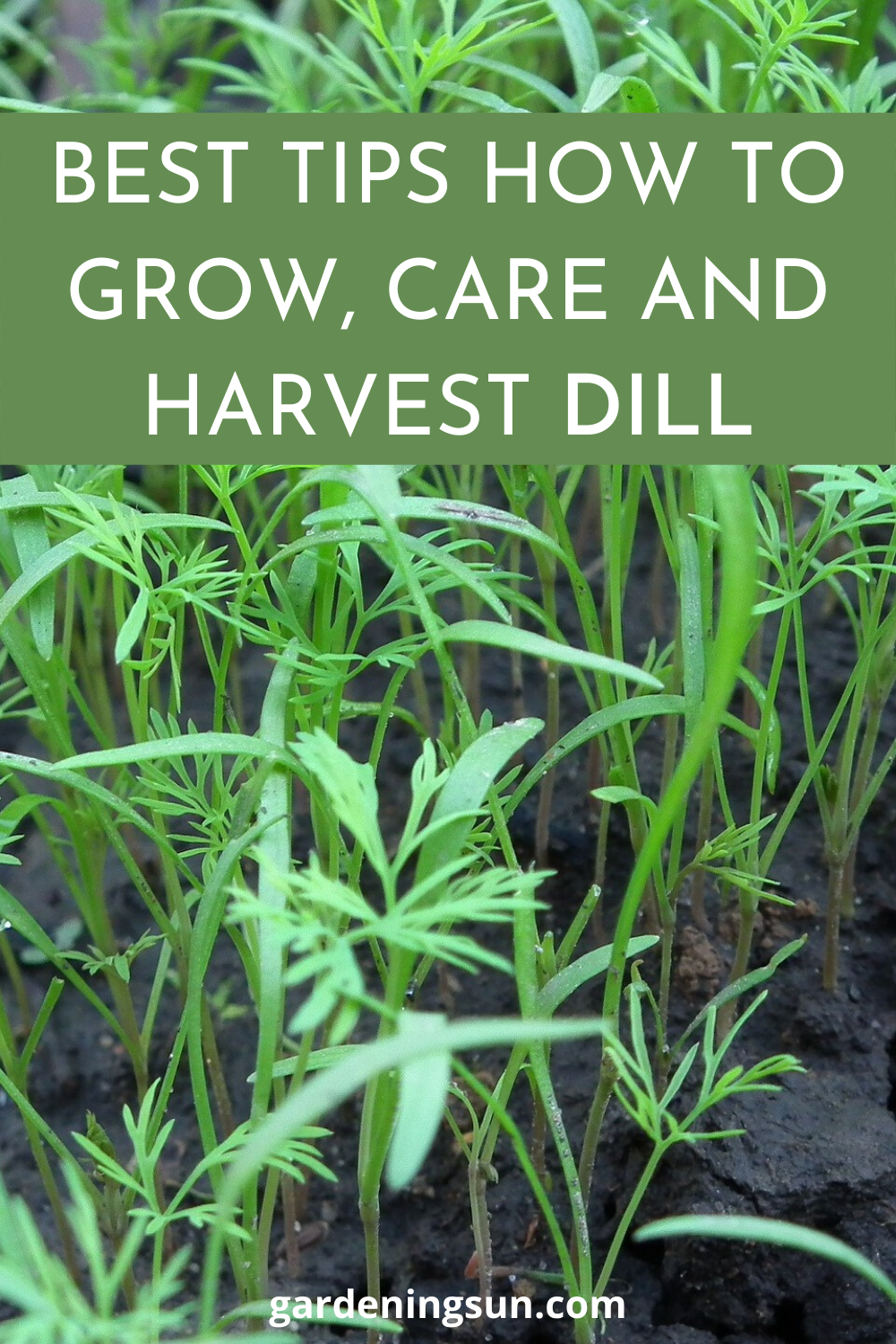Dill (Anethum graveolens) is a perennial herb that typically reaches 2 to 4 feet tall at maturity. Its leaves are used fresh or dried as an herb in dips, soups, salads, and other dishes. The seeds are used as a spice for pickling and for adding flavor to stews and roasts. Dill is native to southern Russia, western Africa, and the Mediterranean. It is part of the Umbelliferae family, which also includes cumin and parsley.
If you’re planting dill for pickling, plant every few weeks into midsummer to ensure a constant supply for when the harvest begins!
To create a permanent patch of dill, allow some of the plants to flower and go to seed each year—you’ll have plenty of early dill to start the season.
Dill attracts beneficial insects such as wasps and other predatory insects to your garden, and is a host plant for the caterpillar of the black swallowtail butterfly.

How to Grow Dill
The best way how to grow dill is directly from seeds rather than from a transplant. Planting dill seed is easy. Dill planting is simply done by scattering the seeds in the desired location after the last frost, then lightly cover the seeds with soil. Water the area thoroughly.
Where to Plant?
Plant dill in full sun and protect it from strong gusts of wind. The plant can survive temperatures down to 25°F.
Dill can grow fairly well in poor soil conditions. But it grows best in well-drained, sandy, or loamy soil that is slightly acidic (pH 5.8 to 6.5). The soil temperature should remain at about 70°F.
Planting
Sow the seeds directly in the ground from April through May, after all, danger of frost has passed. Do not transplant them.
They should germinate in 10 to 14 days. Seedlings should be planted ¾ to 1 inch deep and from 12 to 15 inches apart.
Fertilizing

Fertilizer may be broadcast (spread on the surface throughout the planting) or applied as a side dressing (applied to the soil on or around the sides of the plant). Do not apply it directly with the seed.
In general, apply a formulation such as 20-20-20 once in late spring at the rate of 0.70 pounds of fertilizer per 100 square feet. “Triple 20” fertilizer is commonly used by gardeners because it is readily available at garden centers.
A better formulation that doesn’t apply too much phosphorus is 15-5-10, and it is also available at garden centers. When using 15-5-10, apply 1 pound per 100 square feet.
Pests
Dill may be attacked by parsley caterpillars and tomato hornworms; handpick pests off the plant. Spray with Bacillus thuringiensis kurstaki to be rid of these pests.
Harvesting
When to harvest:
Snip fresh dill leaves as needed during the growing season after plants have reached 8 inches tall or more. Dill leaves have the best flavor just before flowers open, about 70 days after sowing. Dill seed is ready for harvest about 90 days after sowing when seeds are flat and brown; harvest seeds when they are ripe but before they fall to the ground. Collect flower heads and hang them in a paper bag so the seeds drop into the bag.
How to harvest:
Cut leaves or stems with a garden snip or scissors.

